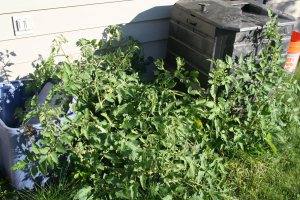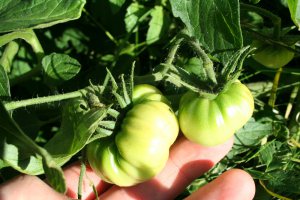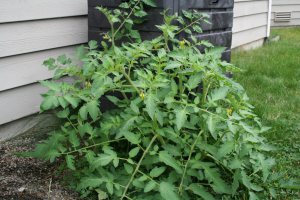Gardening products I would buy if I wasn’t so cheap
15.3 years ago cheap, compost, germination, indoor seed starting, tomato
Today I got my Gardener’s Supply Companycatalog, this particular catalog is dedicated to items to assist you with your gardening habit. You should be able to guess from this site I do my best to resist buying anything for the garden I absolutely need, otherwise I make a cheaper alternative. Well the point of this post is to show what I would like to get if I wasn’t as disciplined.
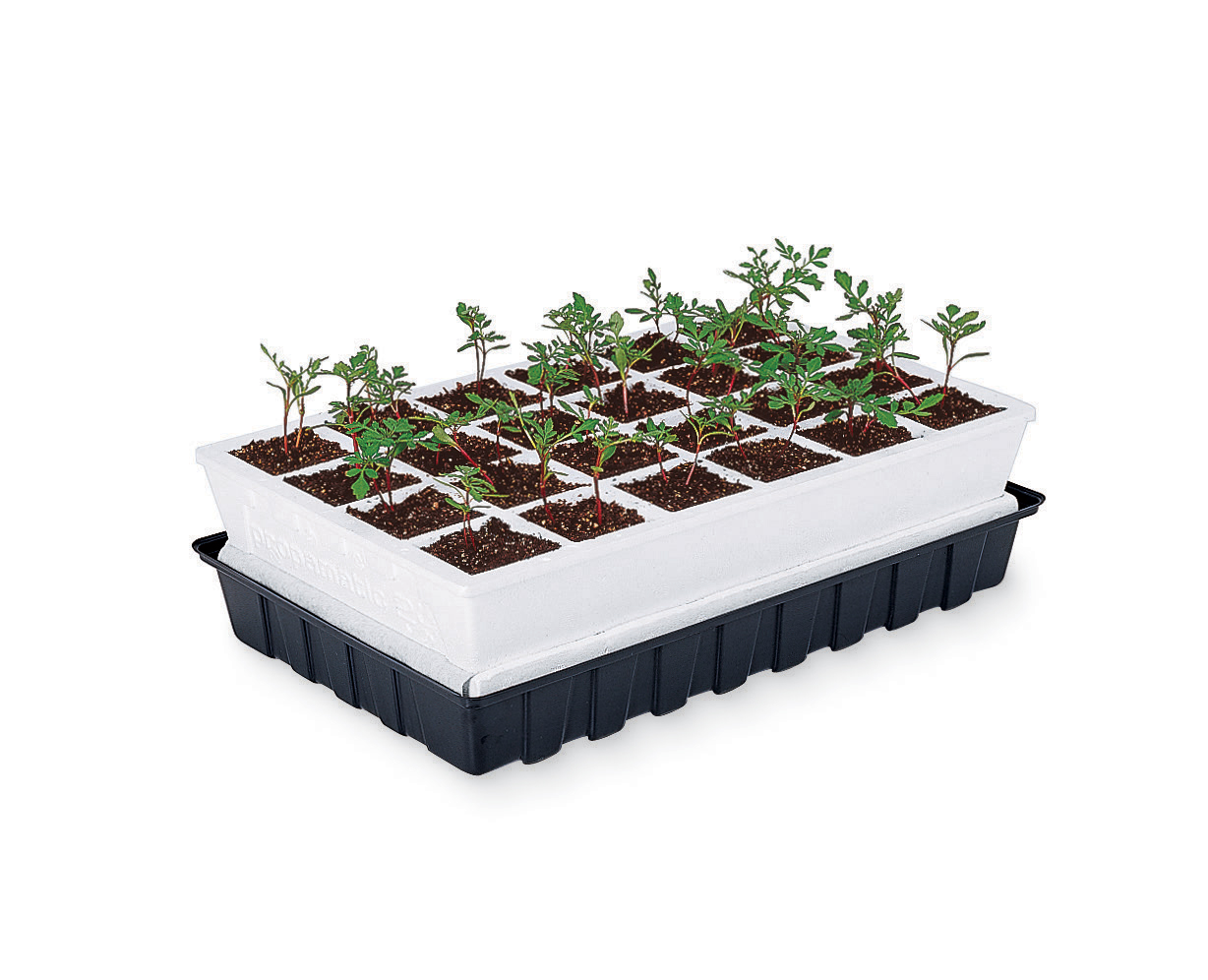 |
They sell these Accelerated Propagation System (APS) seed starting kits which have all the basics you expect from a seed starting kits you would find at your local garden store. They include 6 to 40 cells to plant seedlings and a clear plastic dome to help raise the humidity to provide extra moisture for the tender seedlings. The bonus in this setup is it also contains a reservoir which holds enough water to keep them moist for up to a week. With the help of an elevated platform and capillary matting provides just the right amount of water to your plants. At just $19.95 for the 40 and 24 cells sizes this is one purchase I am still considering, since I never have finished my automatic watering system on my computerized grow box and this makes much better use of space than my plastic tub, newspaper pots, and daily watering method I am doing now. |
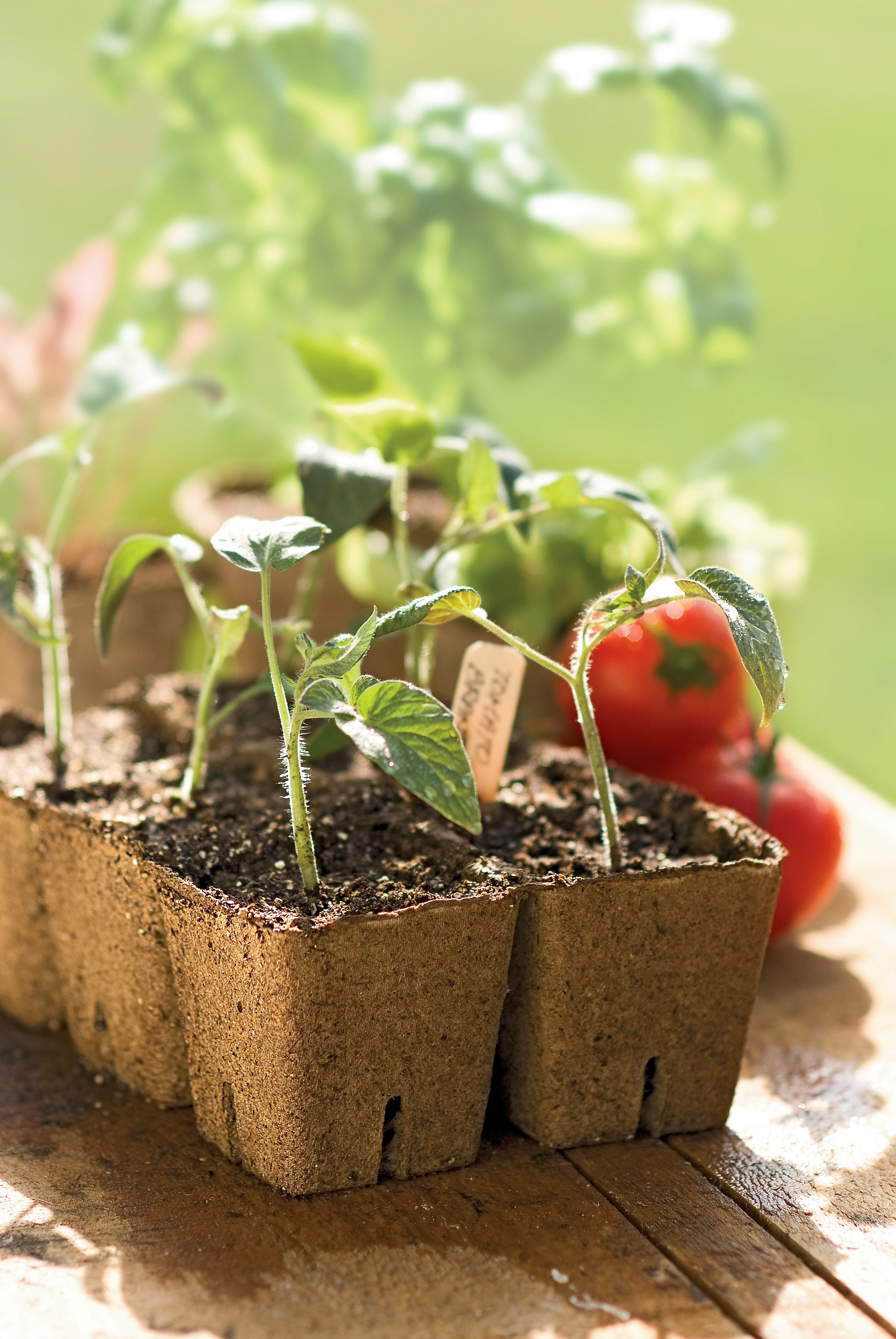 |
Eco-Friendly Cowpots basically planting pots made as a byproduct of processing cow poo. The poo is dried, composted and mixed with natural fibers creating a completely biodegradable pot which holds up well during growth and transplanting but biodegrades in the soil after several weeks. I watched an episode of Dirty Jobs which went through the whole process and it was very interesting and environmentally conscience but, unfortunately due to the price tag (about $1 a pot) these are a little over my budget since my newspaper pots are free. |
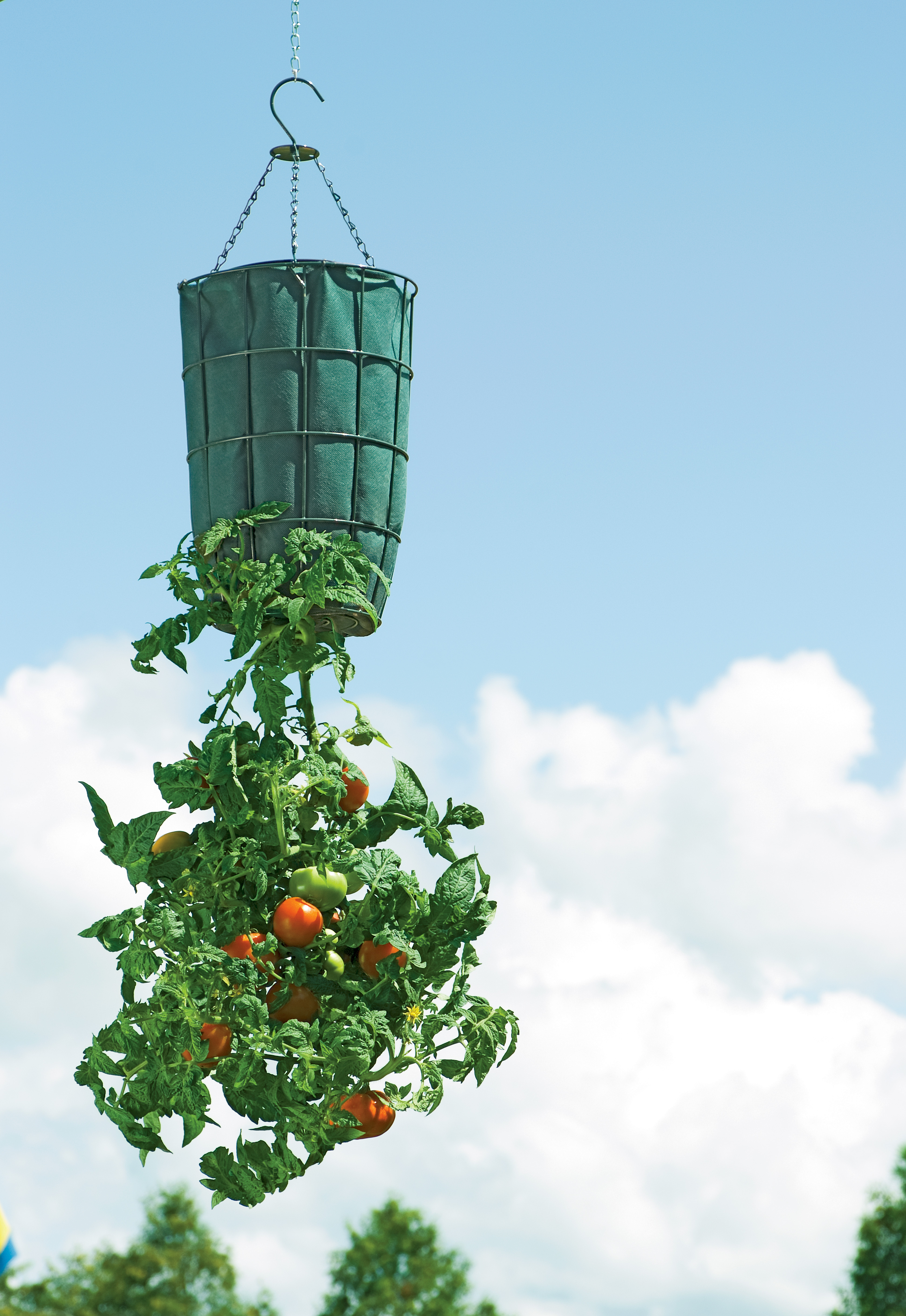 |
Gardener’s Revolution Planter – You have probably seen something similar advertised between gardening shows on HGTV (Topsy Turvy) , I know my daughter has and has been talking about growing tomatoes upside down for some time now. She even on her own came up with a ingenious design to do this (not 5 gallon bucket) which I will write-up when we get around to that project. In case you were wondering the improvement this year (or compared to the TV advertisement) it is the addition of a 1 gallon water reservoir which slowly releases water to the plant as neededSelf watering must be a big seller this year since there are also many other variances of self watering pots in many shapes and sizes with designs similar to the original (to my knowledge) the EarthBox. |
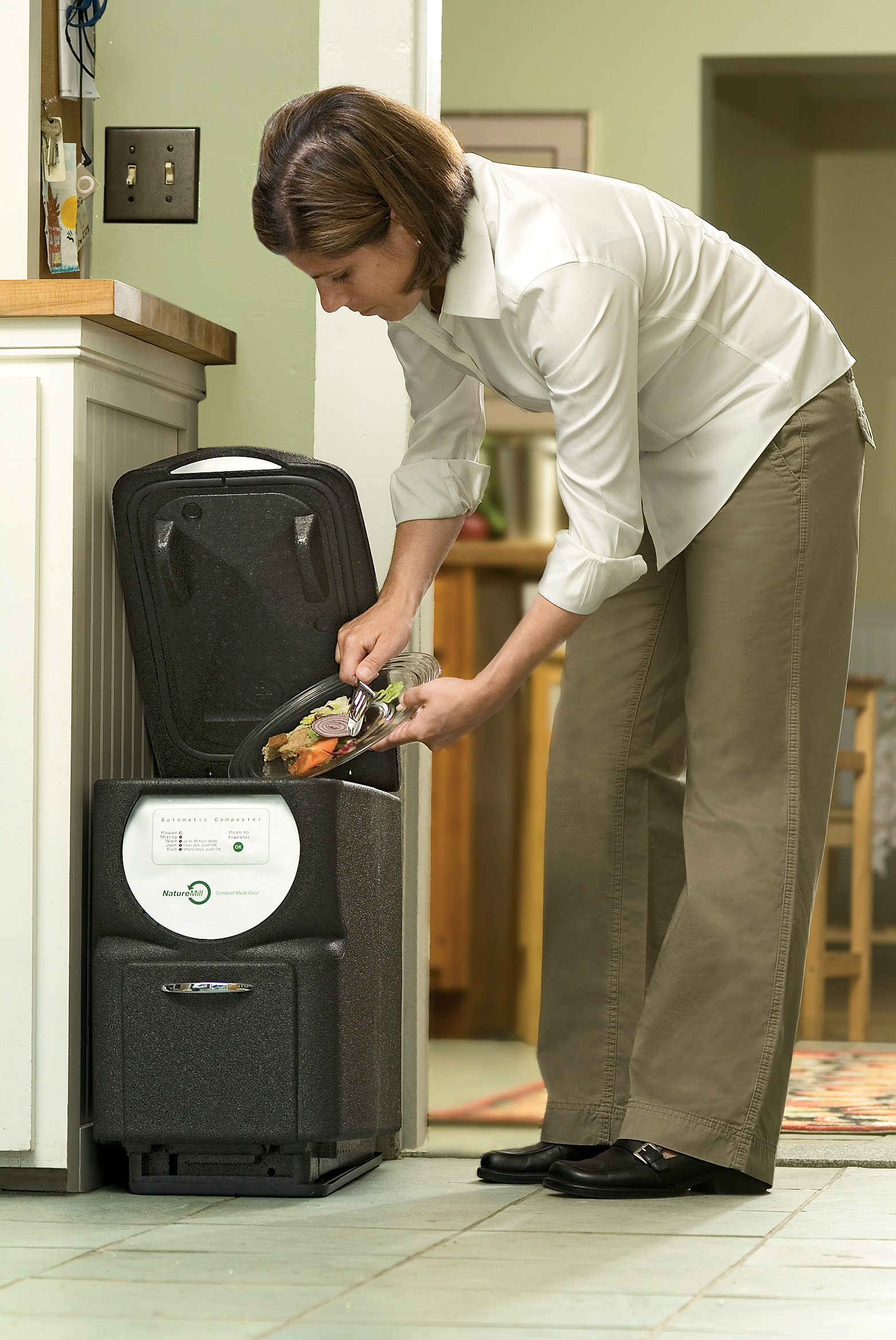 |
Now definitely in the gadget department the Push-Button Kitchen Scrap Composter can take your everyday kitchen scraps and turn them into compost in less than 11 days. The concept on this one is pretty simple:Food + Heat + Spinning = Compost
Of course it crossed my mind of creating something similar myself, but probably would end up burning down the house or if I was lucky just launch partially composted food across the living room at 50 miles per hour. Given the $299 price tag seems like I will be stuck to waiting 3-6 months for my compost to be created. Though it would be much more convenient than walking through the snow to add kitchen scraps to the compost. |
Tags: cheap, compost, garden seeds, growbox, led, outdoor plants, tomato plants, vegetables
Using used coffee grounds in your garden/compost
15.3 years ago cheap, compost, fertilizer
 I have wanted to leverage used coffee grounds in my garden/compost but not being a coffee drinker myself I never seemed to be able to have the right timing to find any at local coffee shops. Recently a colleague taunted me with a picture from his cell phone of a few bags in the coffee shop in our cafeteria at work and my quest began.
I have wanted to leverage used coffee grounds in my garden/compost but not being a coffee drinker myself I never seemed to be able to have the right timing to find any at local coffee shops. Recently a colleague taunted me with a picture from his cell phone of a few bags in the coffee shop in our cafeteria at work and my quest began.
After just two days I have accumulated 40 lbs of coffee grounds, now how can I use this stuff in my garden?
- Throw it in your compost: Coffee grounds are 1.45% nitrogen and contain calcium and magnesium to add some trace minerals you may not get from your other organic material. Coffee grounds are a green material (I know coffee is brown, but same idea as grass clippings) so you should add with at least equal amounts of brown material (leaves) but if you are like me my browns are way to high already.
- Add it directly to your garden: I have seen some arguments that coffee grounds are acidic, but others claim it loses most (or all) of its acidity during the brewing process. Due to my natural curiosity I need to know the answer. So the answer is, it has an average pH of 6.9 so for all intents and purposes, it is neutral. Though if you are really tired and forget to brew it, it will be somewhat acidic.
- Fertilizer: Sometimes your plants need a little boost in the morning as well. Simply add a couple cups of coffee grounds to a bucket of water and let it seep for 24 hours and apply to plant in the same way you would compost tea. Using gardener terms I can’t think of any better name for this as “coffee tea” If you are busy/lazy you also can use it as a side dressing on top of your soil and let the rain seep it for you.
- Annoy your pests to stay out of your garden: It has been said that coffee grounds can deter cats from using your garden as their own personal commode. There are also reports that it can deter slugs as well. I am not sure if it is the abrasive soil effect on their sensitive underside or just the cruel reality that with their slow pace they can’t do anything with the caffeine rush they get. Coffee grounds may annoy ants to convince them to move their home elsewhere.
- Feed your worms: To worms this stuff is like ice cream, if you listen carefully you may hear them cheer your name when you add a handful to your worm bin when your greens from the kitchen may be a little lacking.
According to Starbucks brochure I picked up on my last visit, you should use the coffee grounds within 3 weeks to get the most nutrient value, though if you are composting I am sure you can start out the process in the bag if you really want to. Given that 16.34 billion pounds of coffee is produced each year there is plenty for you to save from ending up in a landfill. This is a great way to help the environment while also adding value to your garden without affecting your pocketbook.
Tags: cheap, coffee grounds, compost, organic vegetables, outdoor plants, worms
Compost bin tomato bears fruit
15.6 years ago compost, tomato
For anyone that has been following the success (or maybe lack of success) of my compost bin volunteer tomato plant, it has nearly taken over the compost bin and finally did bear fruit. What is interesting is that it seems to look like an ugly tomato, which I have grown from seed nor purchased from the grocery store or farmer’s market. I guess the plot thickens, could just be caused by the ill effects of the adverse growing conditions.
Tags: cheap, compost, garden seeds, outdoor plants, tomato plants, vegetables
Something is coming out of my compost bin!! – Update
15.8 years ago compost, tomato
The volunteer tomato plant that has been growing out of my compost bin definitely looks healthy but given its rapid foliage growth and no fruit I guess I don’t need to do any soil tests to confirm my compost is high in nitrogen. Note to self, don’t grow tomatoes in pure compost.
Tags: cheap, compost, outdoor plants, tomato plants, vegetables
Something is coming out of my compost bin!!
15.8 years ago compost, tomato

Noticed this plant before thinking it was a weed growing next to my compost bin, but today I noticed it was actually growing out of a small slat in my compost bin. After a little more inspection I realized the distrinct tomato plant look and smell. Guess I was wrong to think those green tomatoes I threw in last fall were too immature to have viable seeds…
Tags: compost, garden seeds, outdoor plants, tomato plants
Speed Composting
16.1 years ago alfalfa pellets, compost
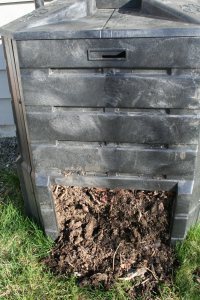
Unfortunately I have a small yard so my space to compost is limited so my goal is to make sure the most use out of the limited space I have. I am also impatient and don’t want to wait a couple years to finally get some compost. Here are some of my suggestions on how to be a speed composter.
Make stuff smaller: The small the you break up the material the faster it will decompose, instead of putting in those leaves freshly raked run over them with your lawn mower or take a few passes with your weed whacker. If you have kitchen waste chop or blend them to help the bacteria out.
Be selective about what you add: The basic idea if the material was alive at some point in its life it will decompose. That gives you a lot to choose from but if you want to speed compost you need to be a little selective about what you add. Lettuce, fruits, most vegetables (carrots take awhile unless you shred), leaves, grass clippings, shredded newspaper will decompose quickly. Items like small branches, vines though will compost over time I would recommend adding these to your yard waste bin.
Create a good environment: You want to create a healthy environment for microorganisms to be happy and reproduce. To thrive they need moisture and air so if you bin it should have the consistency of a wrung out sponge. If you find your bin is lacking moisture just add some while you mix it. This is definitely one of those situations where more is not better too much moisture and you will suffocate the microorganisms due to lack of oxygen. If you find your bin is too wet (usually will start to smell) simply mix (aerate) with an compost mixer or a pitch fork. If it is more of a muddy mess spread it out for a couple days and you should be back to having a microbial breading ground again.
Provide a good diet You want to provide your bin with a proper balance of nitrogen and carbon. The documented best ration is 30 to 1 (carbon to nitrogen) but I wouldn’t get too concerned about exact numbers just keep in mind a compost with just leaves or grass clippings will not be the most efficient way to get some compost into your garden. During certain parts of the season you will find that some nitrogen or carbon materials are harder to come by. For example in the fall you will have all kinds of leaves but your lawn and garden will be baron with greens, while being just the opposite in the summer where you will have a lot of nitrogen rich materials and no carbon. This is an opportunity to supplements your compost by adding nitrogen (alfalfa pellets, blood meal) during the fall/winter and adding carbon (newspaper, sawdust) during the spring/summer time.
Follow these tips and you should have great compost at record speeds.
Tags: alfalfa pellets, cheap, compost, vegetables
